- Please choose a product to add to your basket…
Eucalyptus 80/85 (Eucalyptus globulus)
£0.00
Quick Overview
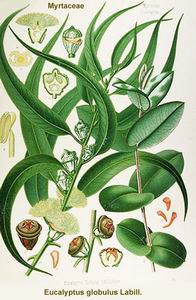 Plant/Part: Tree/Leaves (Source: China, Australia)
Plant/Part: Tree/Leaves (Source: China, Australia)
Latin Name: Eucalyptus Globulus
Family: Myrtaceae
Extraction: Distillation
AROMA: Clear, sharp cleansing
PROPERTIES: This is a fresh and stimulating oil with a penetrating scent and antiseptic propertPlant/Part: Tree/Leaves (Source: China, Australia)
Latin Name: Eucalyptus Globulus
Family: Myrtaceae
Extraction: Distillation
AROMA: Clear, sharp cleansing
PROPERTIES: This is a fresh and stimulating oil with a penetrating scent and antiseptic properties. It is widely used as a component of preparations for relieving congestion and muscle aches. Powerful antiseptic, used in baths and massage during the cold season. Blend oil in chest rubs and use in a vaporiser to keep air germ free in sick room. Effective in all types of fever, lowers the temperature, has a cooling and deodorising action upon the body. May reduce painful effects of migraine. Reputedly helpful with dysentery, typhoid, diphtheria and malaria as well as chicken pox. Works well on the genito-urinary system dealing with such problems as cystitis as well as diarrhoea. Seems to dissolve gall stones and has been used 
Description
DETAILS
 Plant/Part: Tree/Leaves (Source: China, Australia)
Plant/Part: Tree/Leaves (Source: China, Australia)
Latin Name: Eucalyptus Globulus
Family: Myrtaceae
Extraction: Distillation
AROMA: Clear, sharp cleansing
PROPERTIES: This is a fresh and stimulating oil with a penetrating scent and antiseptic propertPlant/Part: Tree/Leaves (Source: China, Australia)
Latin Name: Eucalyptus Globulus
Family: Myrtaceae
Extraction: Distillation
AROMA: Clear, sharp cleansing
PROPERTIES: This is a fresh and stimulating oil with a penetrating scent and antiseptic properties. It is widely used as a component of preparations for relieving congestion and muscle aches. Powerful antiseptic, used in baths and massage during the cold season. Blend oil in chest rubs and use in a vaporiser to keep air germ free in sick room. Effective in all types of fever, lowers the temperature, has a cooling and deodorising action upon the body. May reduce painful effects of migraine. Reputedly helpful with dysentery, typhoid, diphtheria and malaria as well as chicken pox. Works well on the genito-urinary system dealing with such problems as cystitis as well as diarrhoea. Seems to dissolve gall stones and has been used 
CHEMICAL CONSTITUENTS: Cineol, Pinene, Limonene, Cymene, Phellandrene, Terpinene, Aromadendrene.
PRECAUTIONS: A powerful oil so care should be taken with dosage. Avoid using on people with high blood pressure or epilepsy. May also antidote homeopathic medication.
BLENDS: Blends well with Lavender and Pine, Coriander, Juniper berry, Lavender, Lemon, Lemongrass, Thyme.
USES:
Genito-Urinary: stimulates the production of urine (diuretic). antiseptic, used for cystitis, leucorrhoea, nephritis.
Circulatory: cleanses the blood (depurative), lowers sugar levels, improves circulation. (some authors doubt the effect of the essential oil on sugar levels in the blood, attributing it to substances contained in the leaves which are lost in the distillation).
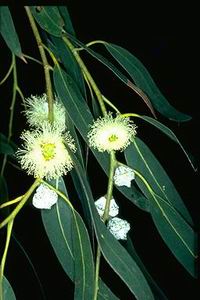 Respiratory: stimulates respiration, relieves coughing, helps to expel mucus, relaxes the respiratory muscles, used for bronchitis, asthma, catarrh, sinusitis, throat infections.
Respiratory: stimulates respiration, relieves coughing, helps to expel mucus, relaxes the respiratory muscles, used for bronchitis, asthma, catarrh, sinusitis, throat infections.
Muscles/Joints: pain-relieving and antispasmodic, used for muscular aches and pains, sprains, rheumatoid arthritis.
General: reduces fever (febrifuge).
Skin/Hair: analgesic, antiseptic, helps wounds to heal, aids in the forming of scar tissue, used for burns, cuts, blisters, ulcers, wounds.
Emotions/Mind: centering, balancing, stimulating, used for exhaustion, congestive headaches, inability to concentrate, mood swings, temper tantrums.
Caution: toxic if taken internally.
There are about 300 varieties of Eucalyptus. The essential oil used in aromatherapy is distilled from the Australians’ beloved ‘gum tree’, the Eucalyptus Globulus, although there are about 15 out of the hundreds of species that yield a valuable oil. The tree was introduced to Europe in the nineteenth century as an ornamental species, but has developed certain characteristics which do not appear in its native home. In particular, it secretes chemical substances which poison the surrounding soil, inhibiting the growth of plants in the area.
The leaves of a mature tree are long, pointed and yellowy-green, as opposed to the leaves from younger trees, which are round and a silvery blueish-green. The oil can be distilled from young or old leaves. It is pale yellow in colour, with a penetrating; and refreshing smell that is too familiar to need description. The main constituent is eucalyptol (about 80%), ethyl alcohol, amyl alcohol, various aldehydes, camphene, eudesmol, phellandrene, pinene and the delightfully named aromadendrene.
Eucalyptus is almost universally known as a decongestant inhalation for colds and catarrh, but it has many other less known uses. Most important of these is its very powerful bactericidal and anti-viral action. A steam inhalation with Eucalyptus is an effective natural treatment for colds, because it not only eases nasal congestion, but inhibits proliferation of the cold virus. Eucalyptus used in air sprays or any form of vapourisation during epidemics, will give a good measure of protection from ‘flu and the infectious illnesses of childhood. In North Africa, groves of Eucalyptus trees have been planted in swampy and unhealthy areas to prevent the spread of malaria. As Eucalyptus is an effective insect repellent, which deters mosquitoes from breeding in the area immediately around the trees, it acts in more than one way towards this end.
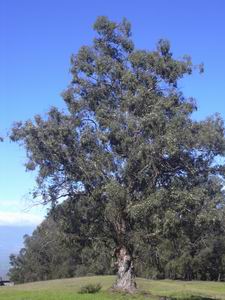 JEAN VALNET gives precise data on the bactericidal properties of Eucalyptus: a spray containing 2% essential oil of Eucalyptus will kill 70% of staphlococci in the air. Eucalyptus oil used in this way has a much greater effect than eucalyptol, its main active principle, which is extracted and used pharmaceutically -illustrating once again the fact that essential oils in their natural state are often more effective than the single chemical constituents so beloved of chemists. The effectiveness of oil of Eucalyptus, in this context, appears to be due to the action of aromadendrene and phellandrenes when they come into contact with the oxygen in the air. Their chemical reaction produces ozone, in which bacteria cannot live. The anti-viral action of Eucalyptus has not been so well researched, but has been so often observed empirically, that scientific verification must only be a formality.
JEAN VALNET gives precise data on the bactericidal properties of Eucalyptus: a spray containing 2% essential oil of Eucalyptus will kill 70% of staphlococci in the air. Eucalyptus oil used in this way has a much greater effect than eucalyptol, its main active principle, which is extracted and used pharmaceutically -illustrating once again the fact that essential oils in their natural state are often more effective than the single chemical constituents so beloved of chemists. The effectiveness of oil of Eucalyptus, in this context, appears to be due to the action of aromadendrene and phellandrenes when they come into contact with the oxygen in the air. Their chemical reaction produces ozone, in which bacteria cannot live. The anti-viral action of Eucalyptus has not been so well researched, but has been so often observed empirically, that scientific verification must only be a formality.
In epidemics and infectious illnesses, then, Eucalyptus serves several purposes at once, as it helps the sufferer but also protects the people coming into contact with him or her. Valnel suggests its use in feverish conditions, to lower the temperature and as a measure to prevent the spread of infection, in cholera, measles, malaria, scarlet fever and typhoid. In measles and scarlet fever he suggests applying dilute Eucalyptus to the skin of the infected person at frequent intervals, and surrounding their bed with a gauze that can be kept moistened with Eucalyptus solution. For ‘flu and bronchitis he combines 4 parts of Eucalyptus with 2 each of Thyme and Pine, and 1 of Lavender in inhalations. A stronger mixture of the same blend (10 grams to a litre of water) can be used to fumigate rooms. I have used Eucalyptus combined with Camomile and Lavender in baths and sprays when my grandchildren had chickenpox. This greatly reduced the fever and itching suffered by the elder child, who became ill first, while her little brother developed only a very mild form of the illness. Urinary tract infections respond very well to Eucalyptus, too, and here its diuretic action can make it doubly useful. The antiseptic and healing properties of Eucalyptus are well known to the Australian aborigines, who bind Eucalyptus leaves around serious wounds. Sophisticated surgeons do not dispute them, and have used a solution of Eucalyptus to wash out operation cavities and Eucalyptus-impregnated gauze as a post- operative dressing. It is valuable for burns, used in the same way, and it helps to form new tissue as the burn heals.
It is useful for septic or congested conditions, and skin eruptions. It is combined with BERGAMOT for treating COLD SORES caused by the virus herpes simplex I, and for the blisters occurring in shingles, which is due to the same virus as chickenpox – herpes zoster. The virus ‘hibernates’ in nerve tracts, and gives rise to symptoms usually when a person is physically run down or under stress. Then the blisters appear on the skin surface overlaying the affected nerve fibres. The acute pain of shingles is due to the fact that sensory nerve tracts are inflamed, and as eucalyptus is an effective local pain killer it will give some relief. The pain often persists for many weeks, or even months, after the blisters have disappeared, so a Bergamot, Eucalyptus cream can be applied to ease the discomfort.
 Eucalyptus can be used in massage oils to relieve pain in RHEUMATISM, muscular aches and fibrositis. As we have such a wide choice of oils for such applications, I use it only for people who do not mind its powerful odour, or perhaps even find its familiar medicinal smell reassuring. There is a certain scepticism among people unfamiliar with essential oils about the therapeutic properties of some of the more sweet-smelling ones. If you come across this, it is seriously worth considering using the more pungent oils in treatment where appropriate. The psychology of this is ‘If it smells so strong, it must be doing me some good’.
Eucalyptus can be used in massage oils to relieve pain in RHEUMATISM, muscular aches and fibrositis. As we have such a wide choice of oils for such applications, I use it only for people who do not mind its powerful odour, or perhaps even find its familiar medicinal smell reassuring. There is a certain scepticism among people unfamiliar with essential oils about the therapeutic properties of some of the more sweet-smelling ones. If you come across this, it is seriously worth considering using the more pungent oils in treatment where appropriate. The psychology of this is ‘If it smells so strong, it must be doing me some good’.
I have mentioned that Eucalyptus deters mosquitoes, and in fact insects in general will be inclined to leave you alone if you include a little of this oil in a blend, perhaps with Bergamot, LAVENDER or any of the other insect-repellant oils. I use a little in room-sprays in the summer, both to keep my home smelling fresh and to keep flies out, and it is another oil which I have used as both a deodorant and flea-deterrent on dogs.
If you get tar on your clothes or skin on a polluted beach. Eucalyptus oil is an effective and harmless way of removing it. Although Eucalyptus globulus is the variety most used for extracting essential oil, a less well-known variety, Eucalyptus radiata, is a better choice for use in therapy, as it has all the properties described above, but a pleasanter aroma than the common Eucalyptus and is more easily assimilated. One or two other varieties, such as Eucalyptus dives and a lemon-scented chemotype, have some value particularly in allowing the therapist to vary the oil if it is needed over more than two or three weeks.
ies. It is widely used as a component of preparations for relieving congestion and muscle aches. Powerful antiseptic, used in baths and massage during the cold season. Blend oil in chest rubs and use in a vaporiser to keep air germ free in sick room. Effective in all types of fever, lowers the temperature, has a cooling and deodorising action upon the body. May reduce painful effects of migraine. Reputedly helpful with dysentery, typhoid, diphtheria and malaria as well as chicken pox. Works well on the genito-urinary system dealing with such problems as cystitis as well as diarrhoea. Seems to dissolve gall stones and has been used 
CHEMICAL CONSTITUENTS: Cineol, Pinene, Limonene, Cymene, Phellandrene, Terpinene, Aromadendrene.
PRECAUTIONS: A powerful oil so care should be taken with dosage. Avoid using on people with high blood pressure or epilepsy. May also antidote homeopathic medication.
BLENDS: Blends well with Lavender and Pine, Coriander, Juniper berry, Lavender, Lemon, Lemongrass, Thyme.
USES:
Genito-Urinary: stimulates the production of urine (diuretic). antiseptic, used for cystitis, leucorrhoea, nephritis.
Circulatory: cleanses the blood (depurative), lowers sugar levels, improves circulation. (some authors doubt the effect of the essential oil on sugar levels in the blood, attributing it to substances contained in the leaves which are lost in the distillation).
 Respiratory: stimulates respiration, relieves coughing, helps to expel mucus, relaxes the respiratory muscles, used for bronchitis, asthma, catarrh, sinusitis, throat infections.
Respiratory: stimulates respiration, relieves coughing, helps to expel mucus, relaxes the respiratory muscles, used for bronchitis, asthma, catarrh, sinusitis, throat infections.
Muscles/Joints: pain-relieving and antispasmodic, used for muscular aches and pains, sprains, rheumatoid arthritis.
General: reduces fever (febrifuge).
Skin/Hair: analgesic, antiseptic, helps wounds to heal, aids in the forming of scar tissue, used for burns, cuts, blisters, ulcers, wounds.
Emotions/Mind: centering, balancing, stimulating, used for exhaustion, congestive headaches, inability to concentrate, mood swings, temper tantrums.
Caution: toxic if taken internally.
There are about 300 varieties of Eucalyptus. The essential oil used in aromatherapy is distilled from the Australians’ beloved ‘gum tree’, the Eucalyptus Globulus, although there are about 15 out of the hundreds of species that yield a valuable oil. The tree was introduced to Europe in the nineteenth century as an ornamental species, but has developed certain characteristics which do not appear in its native home. In particular, it secretes chemical substances which poison the surrounding soil, inhibiting the growth of plants in the area.
The leaves of a mature tree are long, pointed and yellowy-green, as opposed to the leaves from younger trees, which are round and a silvery blueish-green. The oil can be distilled from young or old leaves. It is pale yellow in colour, with a penetrating; and refreshing smell that is too familiar to need description. The main constituent is eucalyptol (about 80%), ethyl alcohol, amyl alcohol, various aldehydes, camphene, eudesmol, phellandrene, pinene and the delightfully named aromadendrene.
Eucalyptus is almost universally known as a decongestant inhalation for colds and catarrh, but it has many other less known uses. Most important of these is its very powerful bactericidal and anti-viral action. A steam inhalation with Eucalyptus is an effective natural treatment for colds, because it not only eases nasal congestion, but inhibits proliferation of the cold virus. Eucalyptus used in air sprays or any form of vapourisation during epidemics, will give a good measure of protection from ‘flu and the infectious illnesses of childhood. In North Africa, groves of Eucalyptus trees have been planted in swampy and unhealthy areas to prevent the spread of malaria. As Eucalyptus is an effective insect repellent, which deters mosquitoes from breeding in the area immediately around the trees, it acts in more than one way towards this end.
 JEAN VALNET gives precise data on the bactericidal properties of Eucalyptus: a spray containing 2% essential oil of Eucalyptus will kill 70% of staphlococci in the air. Eucalyptus oil used in this way has a much greater effect than eucalyptol, its main active principle, which is extracted and used pharmaceutically -illustrating once again the fact that essential oils in their natural state are often more effective than the single chemical constituents so beloved of chemists. The effectiveness of oil of Eucalyptus, in this context, appears to be due to the action of aromadendrene and phellandrenes when they come into contact with the oxygen in the air. Their chemical reaction produces ozone, in which bacteria cannot live. The anti-viral action of Eucalyptus has not been so well researched, but has been so often observed empirically, that scientific verification must only be a formality.
JEAN VALNET gives precise data on the bactericidal properties of Eucalyptus: a spray containing 2% essential oil of Eucalyptus will kill 70% of staphlococci in the air. Eucalyptus oil used in this way has a much greater effect than eucalyptol, its main active principle, which is extracted and used pharmaceutically -illustrating once again the fact that essential oils in their natural state are often more effective than the single chemical constituents so beloved of chemists. The effectiveness of oil of Eucalyptus, in this context, appears to be due to the action of aromadendrene and phellandrenes when they come into contact with the oxygen in the air. Their chemical reaction produces ozone, in which bacteria cannot live. The anti-viral action of Eucalyptus has not been so well researched, but has been so often observed empirically, that scientific verification must only be a formality.
In epidemics and infectious illnesses, then, Eucalyptus serves several purposes at once, as it helps the sufferer but also protects the people coming into contact with him or her. Valnel suggests its use in feverish conditions, to lower the temperature and as a measure to prevent the spread of infection, in cholera, measles, malaria, scarlet fever and typhoid. In measles and scarlet fever he suggests applying dilute Eucalyptus to the skin of the infected person at frequent intervals, and surrounding their bed with a gauze that can be kept moistened with Eucalyptus solution. For ‘flu and bronchitis he combines 4 parts of Eucalyptus with 2 each of Thyme and Pine, and 1 of Lavender in inhalations. A stronger mixture of the same blend (10 grams to a litre of water) can be used to fumigate rooms. I have used Eucalyptus combined with Camomile and Lavender in baths and sprays when my grandchildren had chickenpox. This greatly reduced the fever and itching suffered by the elder child, who became ill first, while her little brother developed only a very mild form of the illness. Urinary tract infections respond very well to Eucalyptus, too, and here its diuretic action can make it doubly useful. The antiseptic and healing properties of Eucalyptus are well known to the Australian aborigines, who bind Eucalyptus leaves around serious wounds. Sophisticated surgeons do not dispute them, and have used a solution of Eucalyptus to wash out operation cavities and Eucalyptus-impregnated gauze as a post- operative dressing. It is valuable for burns, used in the same way, and it helps to form new tissue as the burn heals.
It is useful for septic or congested conditions, and skin eruptions. It is combined with BERGAMOT for treating COLD SORES caused by the virus herpes simplex I, and for the blisters occurring in shingles, which is due to the same virus as chickenpox – herpes zoster. The virus ‘hibernates’ in nerve tracts, and gives rise to symptoms usually when a person is physically run down or under stress. Then the blisters appear on the skin surface overlaying the affected nerve fibres. The acute pain of shingles is due to the fact that sensory nerve tracts are inflamed, and as eucalyptus is an effective local pain killer it will give some relief. The pain often persists for many weeks, or even months, after the blisters have disappeared, so a Bergamot, Eucalyptus cream can be applied to ease the discomfort.
 Eucalyptus can be used in massage oils to relieve pain in RHEUMATISM, muscular aches and fibrositis. As we have such a wide choice of oils for such applications, I use it only for people who do not mind its powerful odour, or perhaps even find its familiar medicinal smell reassuring. There is a certain scepticism among people unfamiliar with essential oils about the therapeutic properties of some of the more sweet-smelling ones. If you come across this, it is seriously worth considering using the more pungent oils in treatment where appropriate. The psychology of this is ‘If it smells so strong, it must be doing me some good’.
Eucalyptus can be used in massage oils to relieve pain in RHEUMATISM, muscular aches and fibrositis. As we have such a wide choice of oils for such applications, I use it only for people who do not mind its powerful odour, or perhaps even find its familiar medicinal smell reassuring. There is a certain scepticism among people unfamiliar with essential oils about the therapeutic properties of some of the more sweet-smelling ones. If you come across this, it is seriously worth considering using the more pungent oils in treatment where appropriate. The psychology of this is ‘If it smells so strong, it must be doing me some good’.
I have mentioned that Eucalyptus deters mosquitoes, and in fact insects in general will be inclined to leave you alone if you include a little of this oil in a blend, perhaps with Bergamot, LAVENDER or any of the other insect-repellant oils. I use a little in room-sprays in the summer, both to keep my home smelling fresh and to keep flies out, and it is another oil which I have used as both a deodorant and flea-deterrent on dogs.
If you get tar on your clothes or skin on a polluted beach. Eucalyptus oil is an effective and harmless way of removing it. Although Eucalyptus globulus is the variety most used for extracting essential oil, a less well-known variety, Eucalyptus radiata, is a better choice for use in therapy, as it has all the properties described above, but a pleasanter aroma than the common Eucalyptus and is more easily assimilated. One or two other varieties, such as Eucalyptus dives and a lemon-scented chemotype, have some value particularly in allowing the therapist to vary the oil if it is needed over more than two or three weeks.
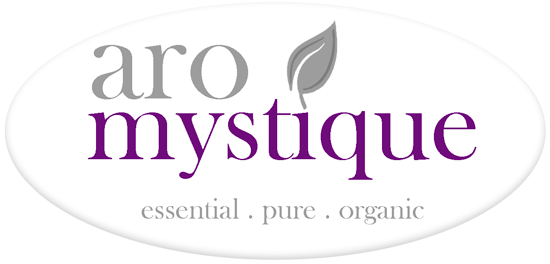
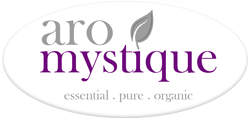
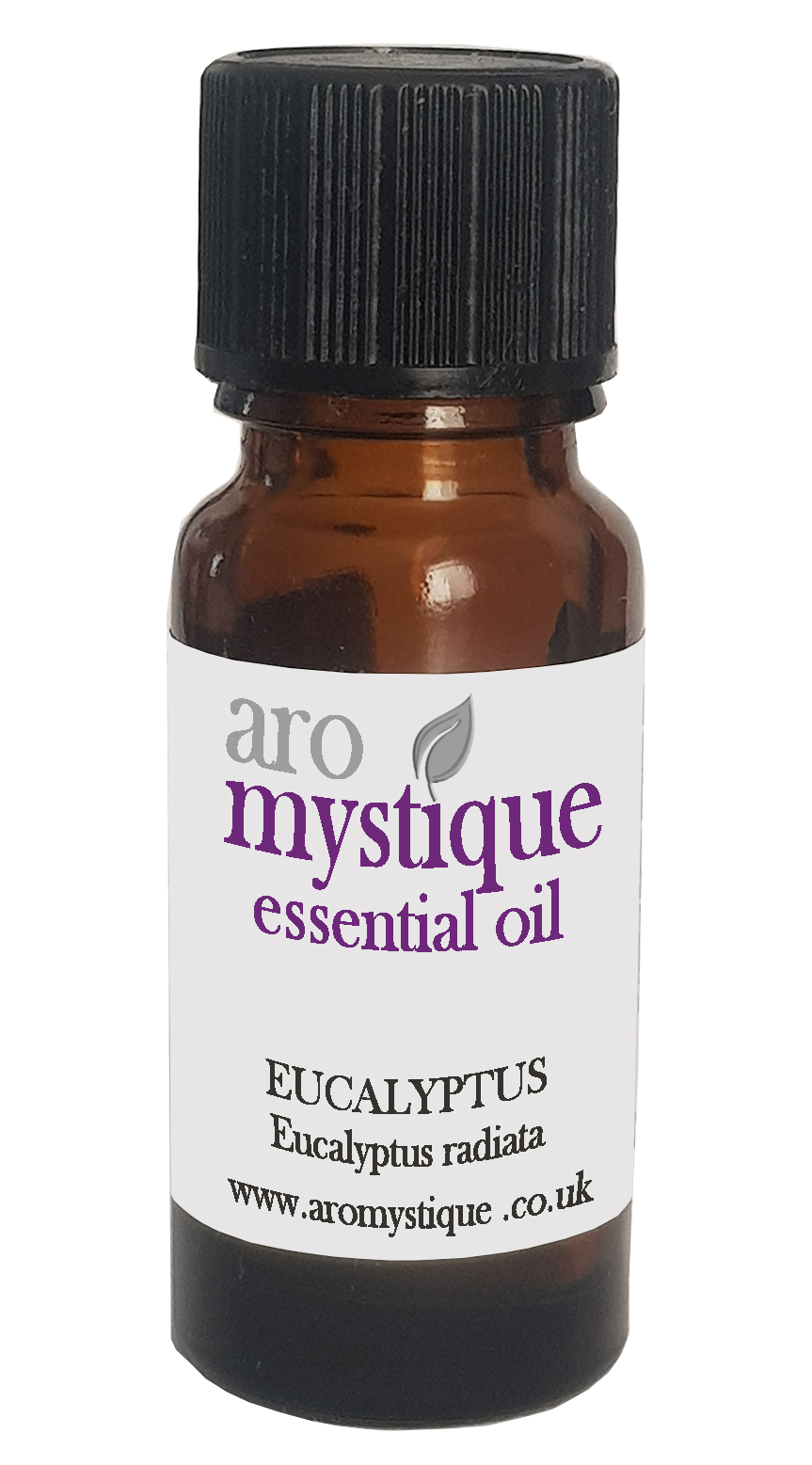
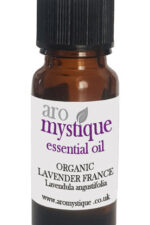
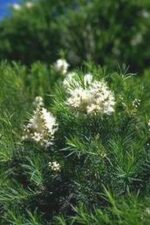
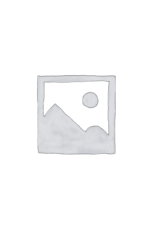
Reviews
There are no reviews yet.